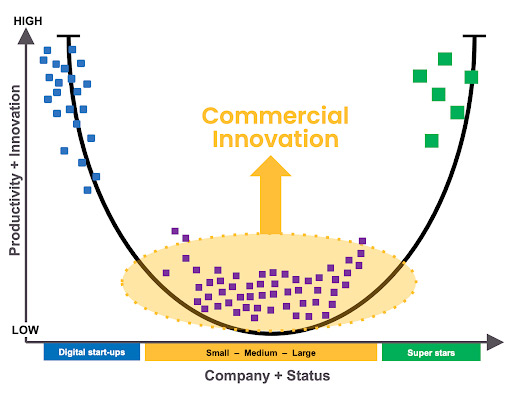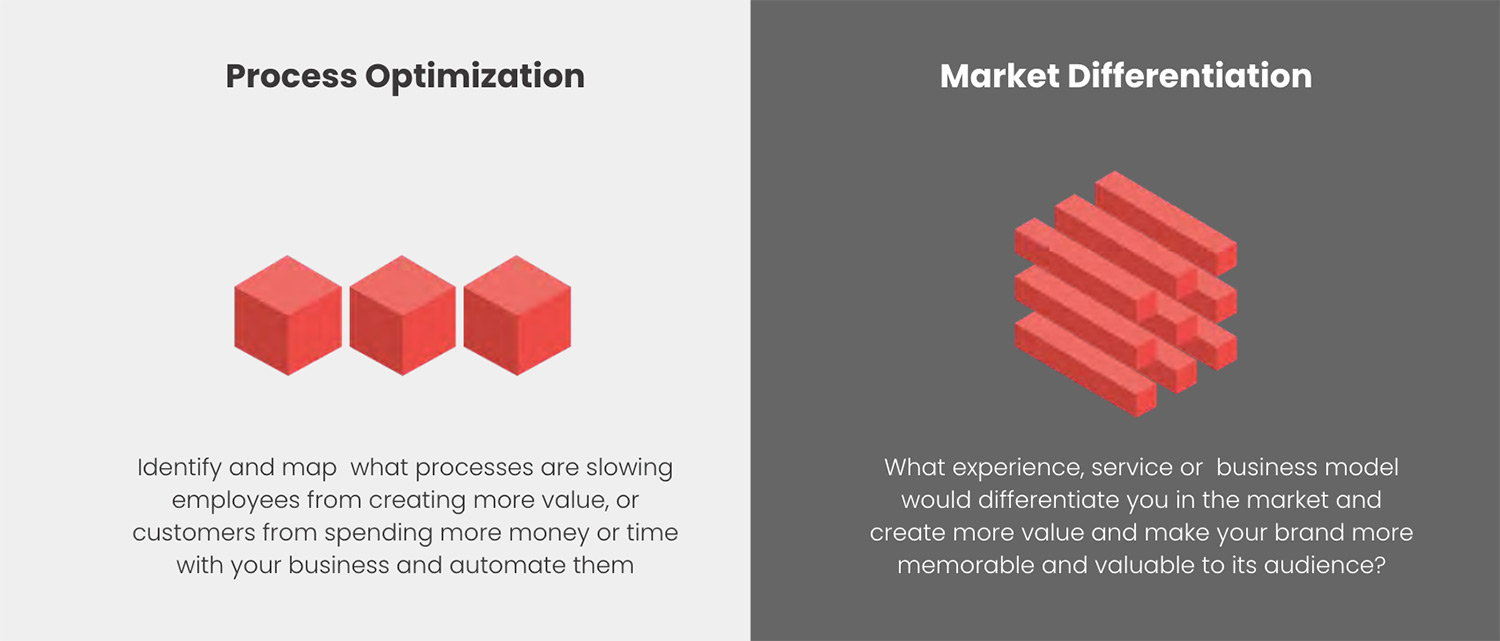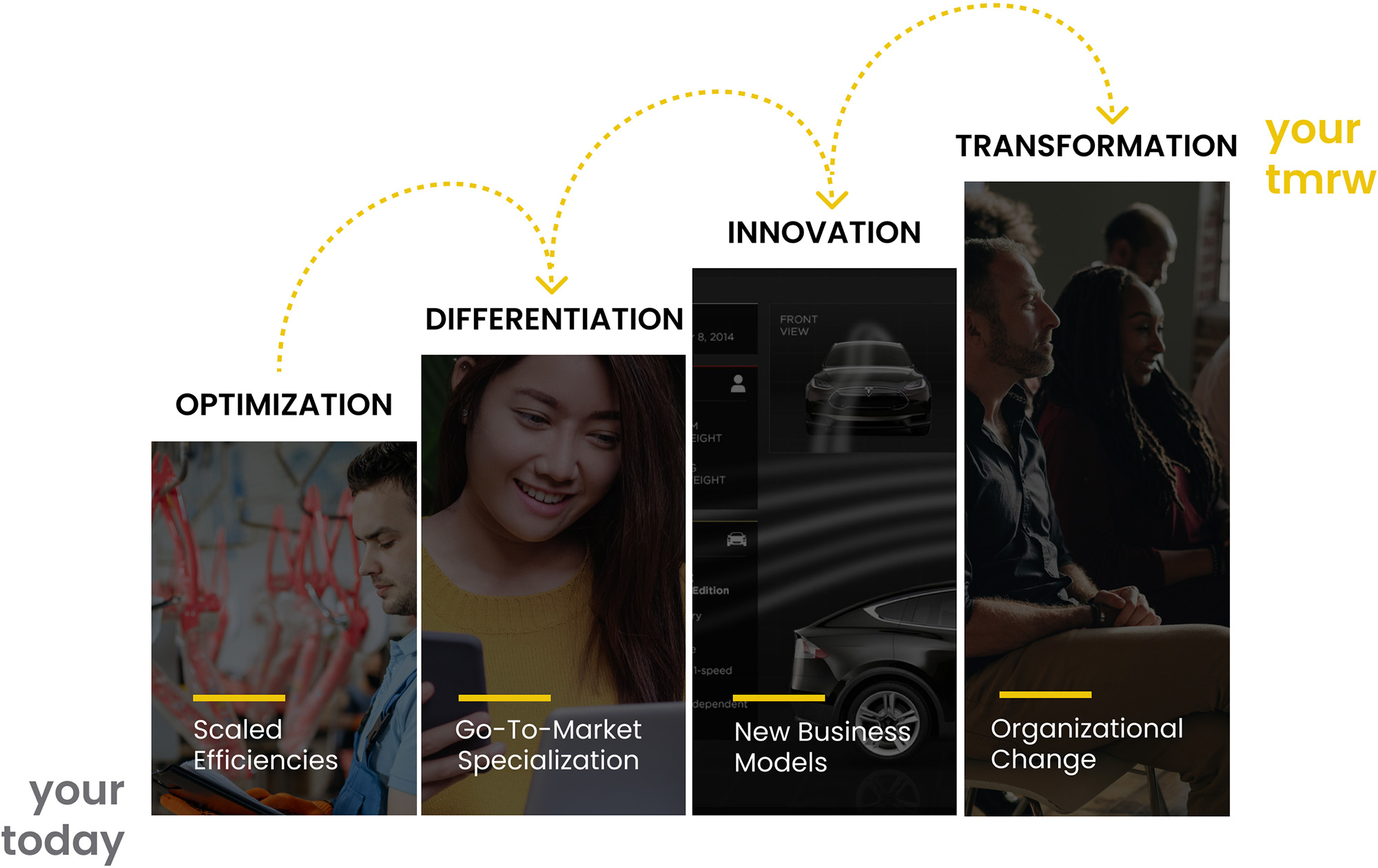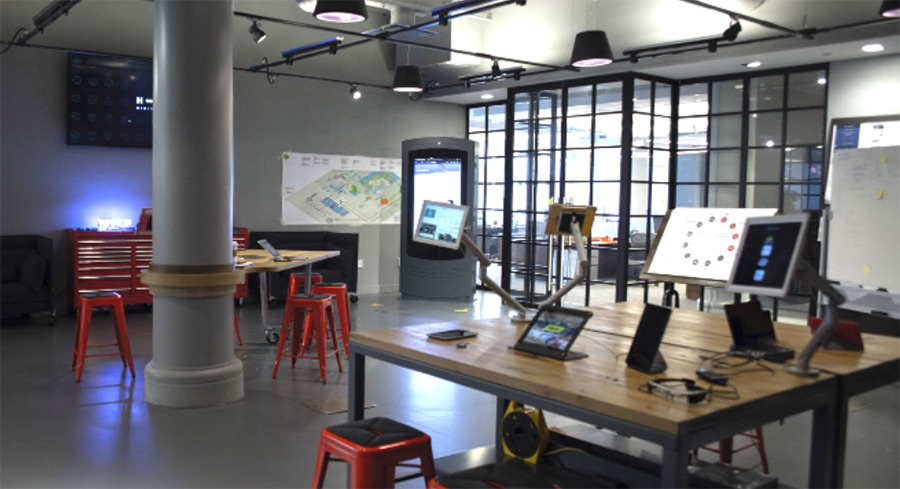The speed and volume of digital-based innovation from venture-backed startups and enterprise giants has accelerated at such a pace that it is leaving “traditional” small-to-medium sized businesses behind at an alarming rate.
To combat this headwind, non-digital SMB leaders can rethink how they approach their business strategy with commercial innovation. Instead of long drawn-out efforts that only happen as part of an annual planning meeting or a heavy-lift with large risky investments, SMB leaders can take more a nimble approach and adopt commercial innovation to accelerate their value creation strategy.
Commercial innovation is not a new approach, it is just not very broadly known or adopted, particularly with traditional SMBs. It starts by shedding the thinking that innovation is a herculean effort that needs big budgets, dedicated teams, and large infrastructure and CapEx costs.
Commercial innovation, when done right, can be a very cost-effective and efficient way to create new value in your organization. Value that is centered “around” your current offering, making it more compelling, efficient, profitable, and sticky.
Venture backed startups already know this and have always had the luxury, nimbleness, and resources to invent new businesses without running the risk of breaking their current operating models or putting their current business on hold [think Uber, Shopify, Zoom, AirBnB, Amazon, Tesla, NetFlix].
At the same time, the industry giants and “SuperStars” flex their deep pockets and invest to spin up huge R&D and M&A incubators with the help of costly big-four consultancies, with little to no risk to their current core business [think Nike, Schneider Electric, HomeDepot].
The Innovation U-Curve

For traditional SMBs, a lack of digital capabilities can create a productivity and innovation “U-Curve Trap”.
An internal commercial innovation practice allows these companies to identify and accelerate strategic efforts and move up the U-Curve.
So how do traditional SMBs, that have great business and customer bases keep up with customer [and employee] expectations for better processes, more meaningful engagement, and a more modern way to work while growing top-line revenue?
We believe it starts with stronger commercial innovation capabilities.
To get out of the U-curve trap traditional SMBs need to implement strong commercial innovation strategies that modernize how they think, operate and engage their customers to strengthen and expand their core business. And they need to do it in a way that does not require them to rethink their entire organization or hemorrhage dollars with large, costly consultancies.
At TMRW Lab we think of Commercial innovation as having two core pillars:
Pillar #1
Business Innovation:
Focuses on technology, data and digital business model strategies. Digital business strategies that focus on accelerating innovation, driving down cost and increasing business growth.
Pillar #2
Brand Innovation:
Focuses on brand, go-to-market, sales enablement, and employee engagement strategies. Brand designs, communication campaigns, go-to-market strategies and pre-sales programs that improve sales and drive engagement.
Now that we have defined commercial innovation, how do you unleash it into your organization?
We see 5 core ways to unleashing a commercial innovation culture in your company.
1. Commercial Innovation “takes a village”
Too often departments are competing for budgets and resources. For commercial innovation to have real near-term impact, it is essential that you look across your business while bringing key stakeholders together with a single approach and process. From your back-end op’s people to your GTM sales execs, they all need to work together towards macro shared goals that accelerate the broader business, not just their department.
2. Create and socialize the framework across the leaders of the organization
Commercial innovation is different from R&D. It is focused on accelerating the growth of your core product or service not replacing it. That’s why it’s important that key stakeholders understand the vision and what acceleration looks like. A strong commercial innovation program finds new ways to magnify an idea or offering by using data, digital automation, GTM strategies, and new business models as a lens for validation and feasibility.

3. Start-with-the-end-in-Mind
Stop looking at today, instead, leverage design-thinking to map out the desired outcomes for the next 1,3, even 5 years, and then plot out the metrics you’ll have to meet and the dependencies you will have to overcome to reach those goals. At TMRW Lab we’ve developed a process called TMRW Mapping that helps organizations identify these value creation areas and creates a vision of tomorrow while providing a roadmap of how to get there.

4. Time-limited design + digital sprints designed to quickly eliminate red-herrings and accelerate value
Don’t try and boil the ocean, commercial innovation should be mapped out within 1-4 months. Clearly identify quick-wins, and the path to get there. Create and leverage pilot programs with and for customers. Leverage widely available no-code/low-code tech to create an MVP, and get it in the hand of the users and customers so you can prove, iterate, scale or move on.
5. Give commercial Innovation a place to thrive
Show everyone involved that this is not a one-off meeting or throw-away program. Create a space, even if it’s just a dedicated meeting room or online portal that lets everyone capture and track the path forward. It should feel exciting and encourage internal tinkerers and innovators to explore and share new ideas. Invite executives, stakeholders and customers to participate in ongoing discussions that work to co-create products, platforms and models that build your growth engine for tomorrow.

An Innovation Lab is a strategic investment that is designed to let the internal innovators build and test new concepts and ideas, but also engage potential and existing customers to co-develop technologies and innovation ideas.
“The Garage was critical in driving our internal culture for change and the key to unlocking a more collaborate way of working with customers so they could see what we could accomplish together.”
Chief Revenue Officer
$12B Technology Disruptor
Don’t stop there.
A commercial innovation program should be an ongoing way of operating, where a broad cross-section of the organization can flex their insights and skills regularly with a consistent, repeatable framework that does not take them away from their core roles.
It won’t always be easy.
The hardest part of the program is often getting it up and running. It is often best to engage with people that have done it before within an organization – not just presented a Powerpoint about it. Engage the right internal and external people to help orchestrate the first sprint. Be sure they are using proven methods and tools and will help create the most amount of value in the shortest amount of time.
After the first sprint, quantify the value of the effort, tweak the model to align with your company culture, and identity and free-up the internal resources needed to turn the effort into your company's new “super-power”.
Bottom line. innovation doesn’t have to be lengthy and costly. A strong commercial innovation program is designed to rapidly unlock the value that is waiting dormant in your organization today and will accelerate your tomorrow.